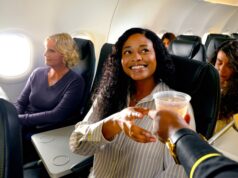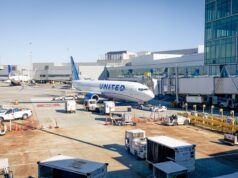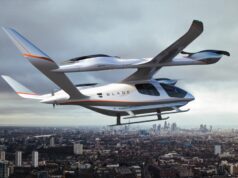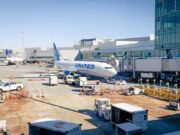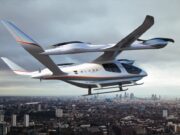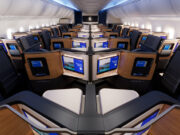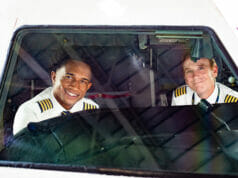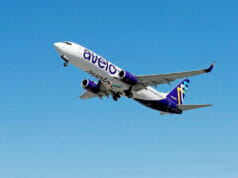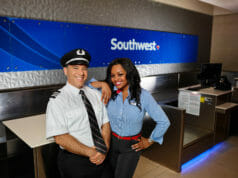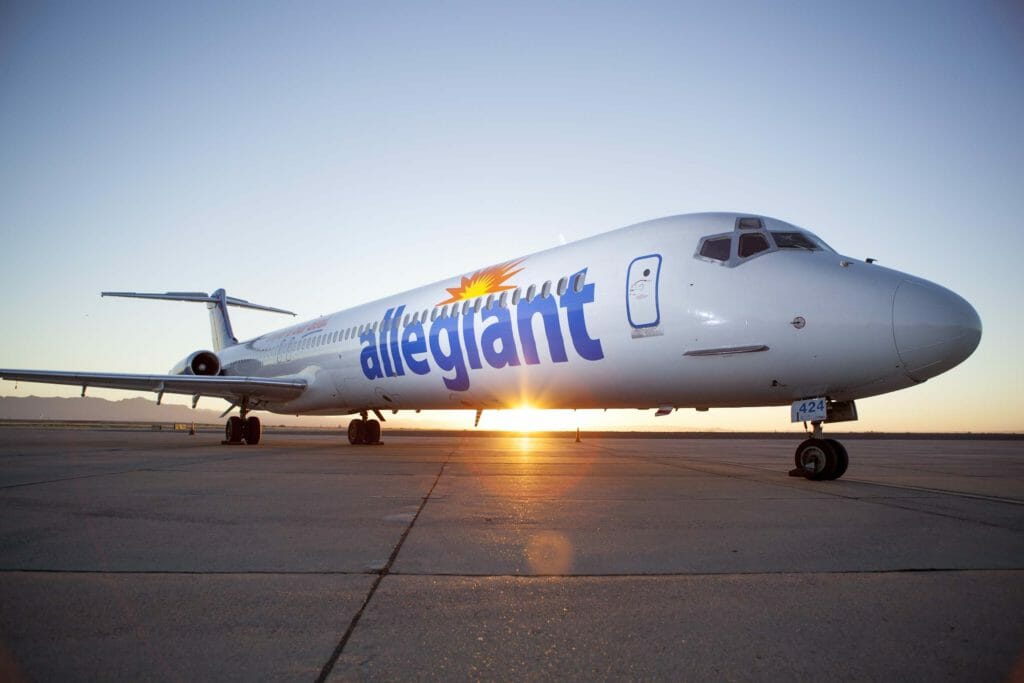
Introduction
Allegiant is more than an airline, it’s an innovative travel company dedicated to providing the best travel deals to its customers. Linking small U.S. cities to world-class leisure destinations such as Florida, Las Vegas, Phoenix, California, Hawaii, and Myrtle Beach, S.C. Allegiant’s low-cost, high-efficiency, all-jet passenger airline offers air travel both on a stand-alone basis and bundled with travel products such as hotels, car rental and entertainment tickets. Allegiant was founded in 1997 in Fresno, Calif. In 1999, the company began scheduled passenger service between Fresno and Las Vegas utilizing a DC-9 aircraft. In June 2001, Maury Gallagher restructured the airline to a low-cost model and moved the headquarters and operations to Las Vegas, where they remain today. Allegiant’s unique strategy has allowed the company to remain profitable every quarter since 2003 despite industry challenges that include fluctuating fuel costs and an unstable economy. From 2002 through 2004, the scheduled service business model was developed and, by 2004, Allegiant was flying MD80 aircraft from 13 small cities to Las Vegas offering bundled air and hotel packages. Allegiant became a public company in December 2006, under the Allegiant Travel Company name and trades on the NASDAQ under ticker ALGT. In March 2010, the company announced it signed a forward purchase agreement to acquire six Boeing 757-200 aircraft that enabled Allegiant to expand its leisure travel strategy into Hawaii with flights beginning in summer 2012. In August 2012, Allegiant entered a lease agreement to lease nine Airbus A319 aircraft, and in December 2012, announced its intention to acquire nine Airbus A320 aircraft. Today, the travel company continues its focus on linking travelers in small cities, generally at under served airports that have limited or no service, to top leisure destinations. Allegiant makes travel not only affordable, but also convenient. This is why Allegiant has been listed as one of American’s fastest growing companies.
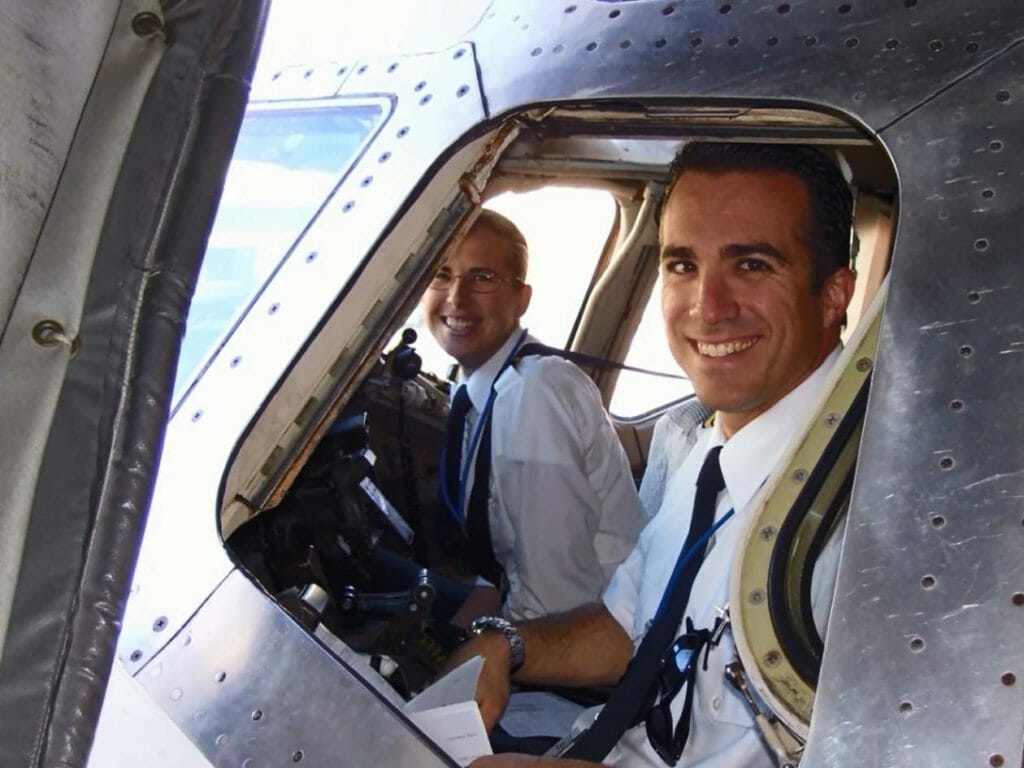
Allegiant Fleet and Growth
Allegiant is currently looking at potentially hiring up to 140-200 pilots in 2016. This is due to growth and aircraft deliveries. Allegiant Air recently ordered our 50th A320 passenger jet. Currently Allegiant has two new base openings this year, Pittsburgh, PA (KPIT) will open 12/24/2015 with 1 A-319, and Cincinnati, OH (CVG) will open 01/6/2016 with 3 A-319 aircraft.
| Aircraft | Active | Orders | Passengers |
| Airbus A319-100 | 9 | 21 | 156 |
| Airbus A320-200 | 15 | 4 | 177 |
| Boeing 757-200 | 6 | – | 215 |
| MD-83 | 46 | – | 166 |
| MD-88 | 6 | – | 166 |
| Total | 82 | 25 |
Current Pilot Domiciles as of Dec 2015:
| Base | Equipment |
| LAS | MD80/757 |
| SFB | A320/MD80 |
| PIE | A320/MD80 |
| IWA | A320/MD80 |
| PGD | A320/MD80 |
| HNL | 757 |
| BLI | A320 |
| FLL | A320 |
| OAK | A320 |
| AVL | MD80 |
| VDB | MD80 |
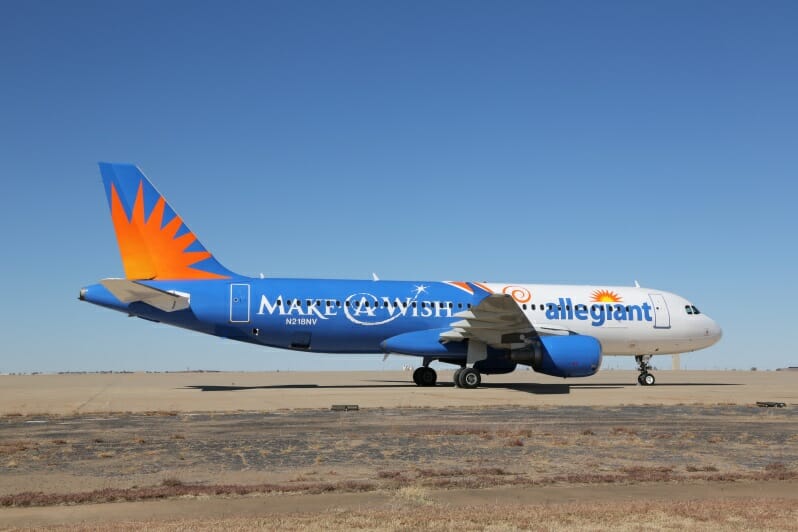
Training
As a new hire at Allegiant, pay begins on the first day of training. In addition to a base pay of 70 hours, hotel and transportation are also provided. Transportation consists of a shuttle bus to and from the hotel and training center during ground school. Thereafter, a rental car will be allocated for each paired simulator crew for the remainder of training.
New Training Center
To support the future growth, Allegiant was excited to announce the opening of the state-of-the-art training facility in Las Vegas (LAS). The multi-million-dollar 34,000-sqaure-foot training center houses, two Airbus A-320 full flight simulators, one A-320 advanced flight training device, an A-320 systems trainer and an MD-80 advanced flight training device. It also has evacuation training systems for MD-80s, Boeing 757 door and window evacuations, A-320 door and window evacuations, a fire trainer, and ditching equipment. An MD-80 simulator is planned later this year. Plans are underway for an East Coast Training Center in Orlando, construction to start in 2016.

Schedules
Because of Allegiant’s unique business model we fly mostly day trips. A majority of the schedules are 2 or 4 leg turns ending back in domicile every night. This makes it efficient for the company to overnight the aircraft in domicile and for pilots who enjoy sleeping in their own bed every night. Typical work days can vary, since we cater to the vacation traveler, most bases generally fly reduced schedules on Tuesday, Wednesday and Saturday. This is when most folks start and end their vacations.
Interview with Mark Grock, System Chief Pilot
Pre Interview:
Craig: What can an applicant do to increase their chances of being called for an interview?
Mark: Continuing to build qualifications and attending recruiting events.
C:
How critical is it to attend a job fair to get an interview?
M: Not totally critical, we review all applications that we receive. It is nice to put a face with an application.
C: What is the best way to prepare for an interview with your company?
M: Doing research and understanding the differences in Allegiant’s business model compared to others.
Interview:
C: Do you recommend that applicants get to your headquarters city the day before and get a hotel room for the night?
M: Yes, usually the interviews start at 7:30am and last about a half day.
C:
Can you walk me through a typical day of interviews?
M: We start with company presentation, followed by usual paperwork and finger printing, then a board interview with usually two Chief Pilots and someone with People Services. Lastly a 20-30min non-motion sim evaluation in our MD80 FTD.
C: What kind of questions can an applicant expect to be asked?
M: Walk through your employment history, log book review, TMAAT questions, and scenario based questions
C: If the TMAAT question being asked does not apply to that applicant can that question be skipped?
M: We wouldn’t ask it unless it applies to the applicant.
C: What are some of the biggest mistakes that applicants make during the interview process?
M: Not coming fully prepared to interview i.e updated log books or not having researched the company. Also just not being themselves, we are trying to get know the individual better during this part of the process.
Simulator Evaluation:
C: Do you have a simulator ride?
M: Yes, Non motion MD80 FTD.
C: What types of scenarios should you expect in the simulator evaluation?
M: Basic climb out, hold and into an approach. The person conducting the evaluation will manage all the configuration changes.
C: What are you looking for in the simulator evaluation?
M: Basic airmanship skills, situation awareness and overall flight deck presence.
C: What are the biggest mistakes applicants make?
M: Poor “stick and rudder” skills and general lack of professional discipline. A lot of applicants come out of advance glass equipment and can have trouble transitioning into the MD80 and 757 that don’t have full glass.
Post Interview:
C: Do you tell applicants they are hired in person that day?
M: Usually, Yes.
C: How soon can an applicant expect a class date after being hired?
M: We try to give at least a month notice.
General:
C: How many pilots does your airline expect to hire this year?
M: 200+
C: Does Allegiant Air have a pilot referral program?
M: We do take internal recommendations, with an official letter of recommendation from the current employee.
C: Can you describe the partnership that Allegiant has with Ameriflight?
M: Yes, we are proud to have partnered with Ameriflight on this preferential hiring program. The minimums to qualify is 1000 hours in one of Ameriflight’s type rated required aircrafts and instructor/management experience.
C: What is pay and housing in training?
M: From the first day of class you are paid 70 guaranteed at first year pay. Hotels, (single occupancy) are provided throughout training. Once you start sim, a rental car will be provided for you and your sim partner.
C: What are Allegiant’s typical trips like?
M: Most of Allegiant trips are “day trips” or “out and backs”. Generally 2 or 4 legs starting in domicile, going to an out station where they turn and head back to domicile. It affords pilots who live in a base to basically sleep in their own beds every night.



























































